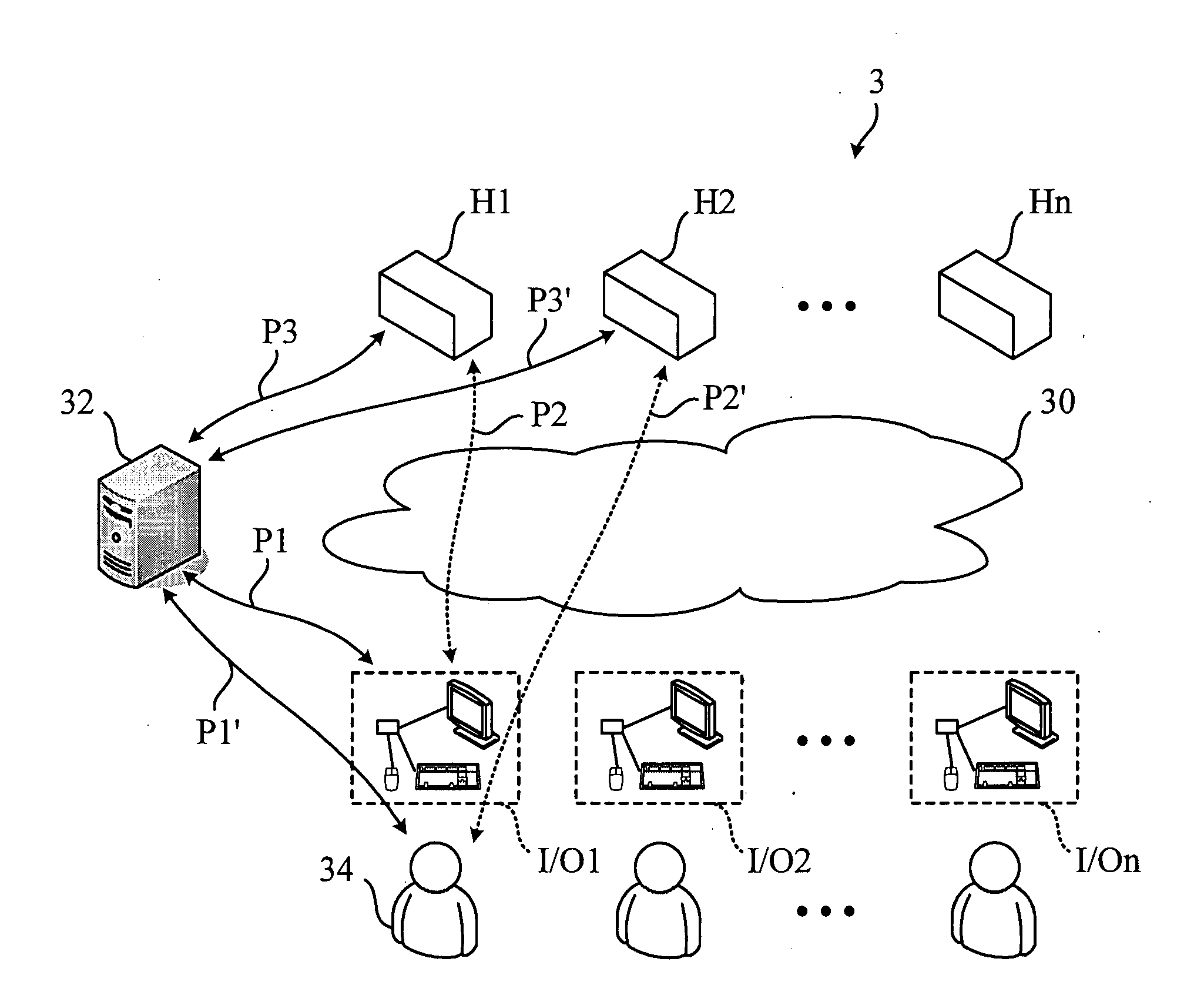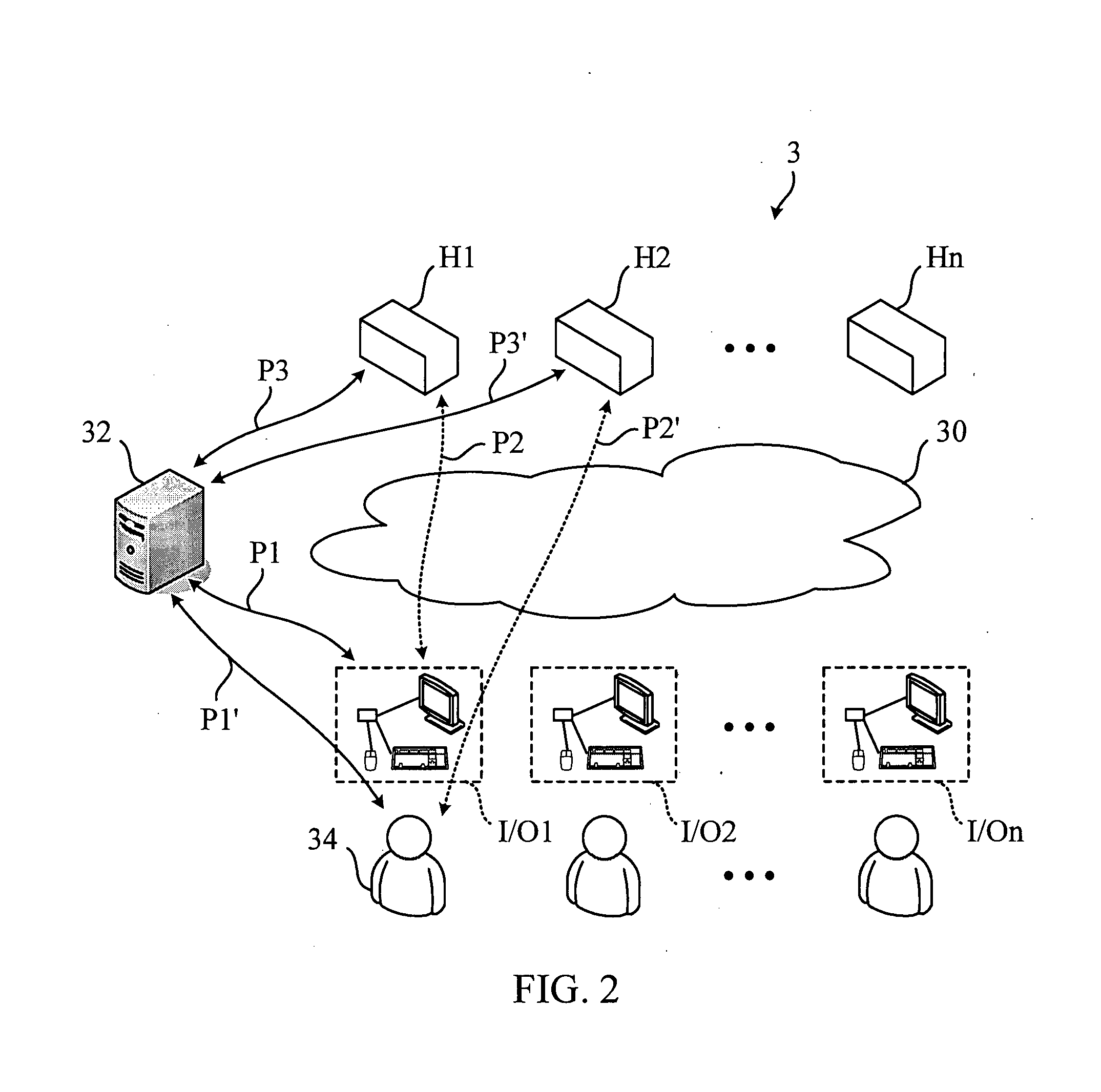Method for pairing hosts and I/O peripherals in centralized computer system
- Summary
- Abstract
- Description
- Claims
- Application Information
AI Technical Summary
Benefits of technology
Problems solved by technology
Method used
Image
Examples
Embodiment Construction
[0015]Referring to FIG. 2, FIG. 2 is a schematic diagram illustrating an infrastructure of a centralized computer system 3 according to a preferred embodiment of the invention. The centralized computer system 3 comprises a network 30, a plurality of hosts H1˜Hn, a plurality of I / O peripherals I / O1˜I / On, and a hierarchical server 32. In this embodiment, the hierarchical server 32 complies with but is not limited to a Lightweight Directory Access Protocol (LDAP). In this embodiment, each host H1˜Hn has a plurality of operating functions, wherein these operating functions comprise at least one selected from a group consisting of: console redirection, audio redirection, keyboard and mouse redirection, virtual storage redirection, monitoring and controlling, and other operating functions.
[0016]In the invention, a hierarchical directory is stored in the hierarchical service 32. The hierarchical directory is used for defining a first connecting relation for each host H1˜Hn and each set of ...
PUM
 Login to View More
Login to View More Abstract
Description
Claims
Application Information
 Login to View More
Login to View More - R&D
- Intellectual Property
- Life Sciences
- Materials
- Tech Scout
- Unparalleled Data Quality
- Higher Quality Content
- 60% Fewer Hallucinations
Browse by: Latest US Patents, China's latest patents, Technical Efficacy Thesaurus, Application Domain, Technology Topic, Popular Technical Reports.
© 2025 PatSnap. All rights reserved.Legal|Privacy policy|Modern Slavery Act Transparency Statement|Sitemap|About US| Contact US: help@patsnap.com



